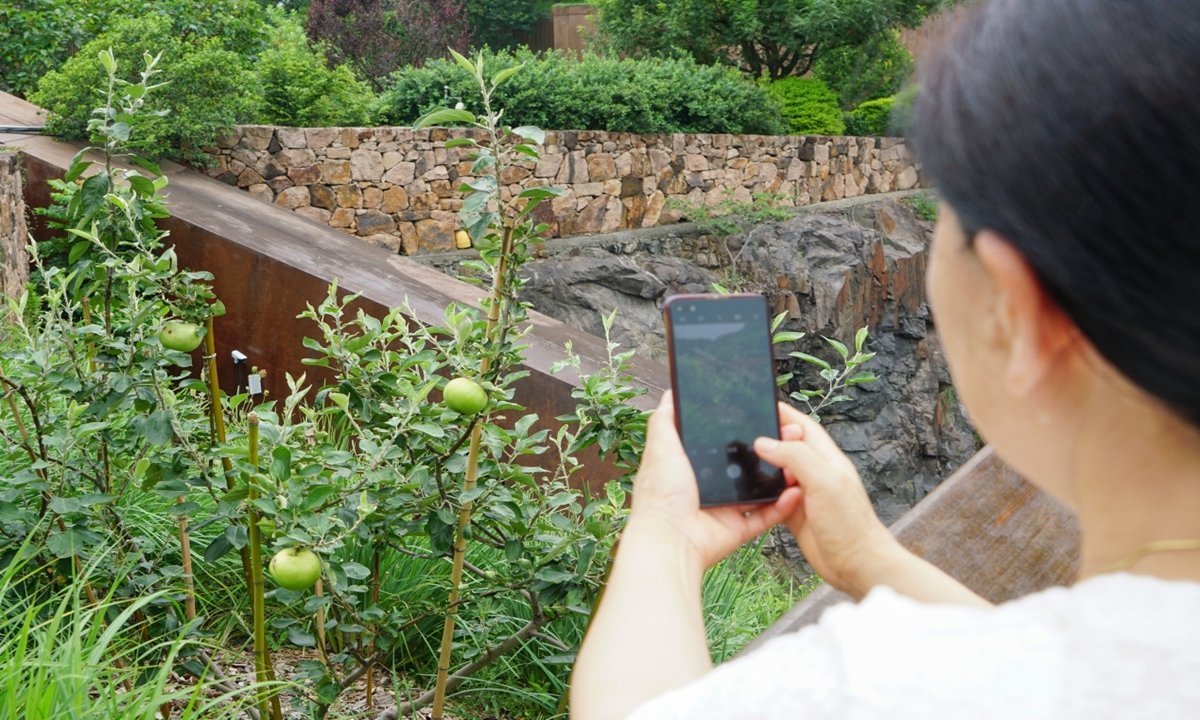Eight years after being taken from its original home in the UK, a cutting from the celebrated apple tree in Isaac Newton’s backyard has borne fruit for the first time in its new location, the Shanghai Chenshan Botanical Garden. This historic moment was achieved through the painstaking efforts of Chinese horticulture engineers, symbolising not just a significant horticultural achievement but also an exemplification of international cooperation, scientific endeavour, and cultural exchange.
The Shanghai Chenshan Botanical Garden announced on Wednesday that there are currently five ripening green apples on the tree. Each one of these apples, nurtured over several months, weighs between 150 and 250 grams. This may seem modest compared to the tree’s theoretical capacity to yield 30 to 50 apples as pointed out by Yang Wanyun, an engineer from the garden’s Horticulture and Landscape Department.
However, the smaller yield is due to a strategic choice, known as “green harvesting”, where the engineers removed the smaller or unhealthy apples to give the best-growing ones the optimal chance to flourish. This practice, Yang explains, ensures better protection and nourishment for the remaining apples.
Yet, the fruit is not intended for consumption. As the apples mature, the garden will collect them and discuss potential uses, which are yet to be determined.
This unique botanical exhibition is open to public viewing from outside a protective fence. Additionally, Zhang Zhe from the garden’s Cooperation and Exchange Department shared that a 24-hour camera allows virtual visitors to watch a livestream of the tree online, promoting accessibility and allowing more people to share in the excitement of this botanical marvel.
The tree began blooming in early April and started yielding fruit in May. The news was warmly received by Shanghai residents, with many expressing excitement over the historical significance of the tree bearing fruit, and some humorously expressing their willingness to be struck by an apple in the way Newton famously was.
The cultivation of this tree is part of a scientific and cultural exchange initiated in March 2015. The Shanghai Science and Technology Association signed an agreement with the UK’s National Trust, which allowed five fresh cuttings of the original Newton apple tree to be transported to China.
The cuttings were carefully grafted onto potted apple trees in the greenhouse of the Shanghai Chenshan Botanical Garden. Following this, in September 2022, the most robust grafted apple tree was moved to an outdoor location. The garden’s engineers then devised strategic plans to ensure the tree thrived despite Shanghai’s higher temperatures and humidity.
The relocation of Newton’s apple tree to China aims to inspire young Chinese people to take an interest in science and imbibe the spirit of Newton’s curiosity. As the apple tree continues to flourish in Shanghai, so does the hope that it will encourage a new generation of scientific exploration.
READ MORE:
